The year 2024 was marked by constant change: cows can now get the flu, and there was much economical and geopolitical upheaval.
It was also a transformative year for Learning & Development (L&D), full of AI experimentation and skill gap challenges brought by labor shortages.
Taking in the knowledge gained throughout 2024, how will we find success in 2025? Let’s explore the trends and strategies shaping the future.
Let’s dive in!
L&D Experts Will Get Selective About AI
As they should.
In 2024, we went from 5% to 95% of companies experimenting with AI in just one year. Experimentation is a natural quality of L&D professionals, but whereas 2024 was all about testing the waters, 2025 will be about implementation.
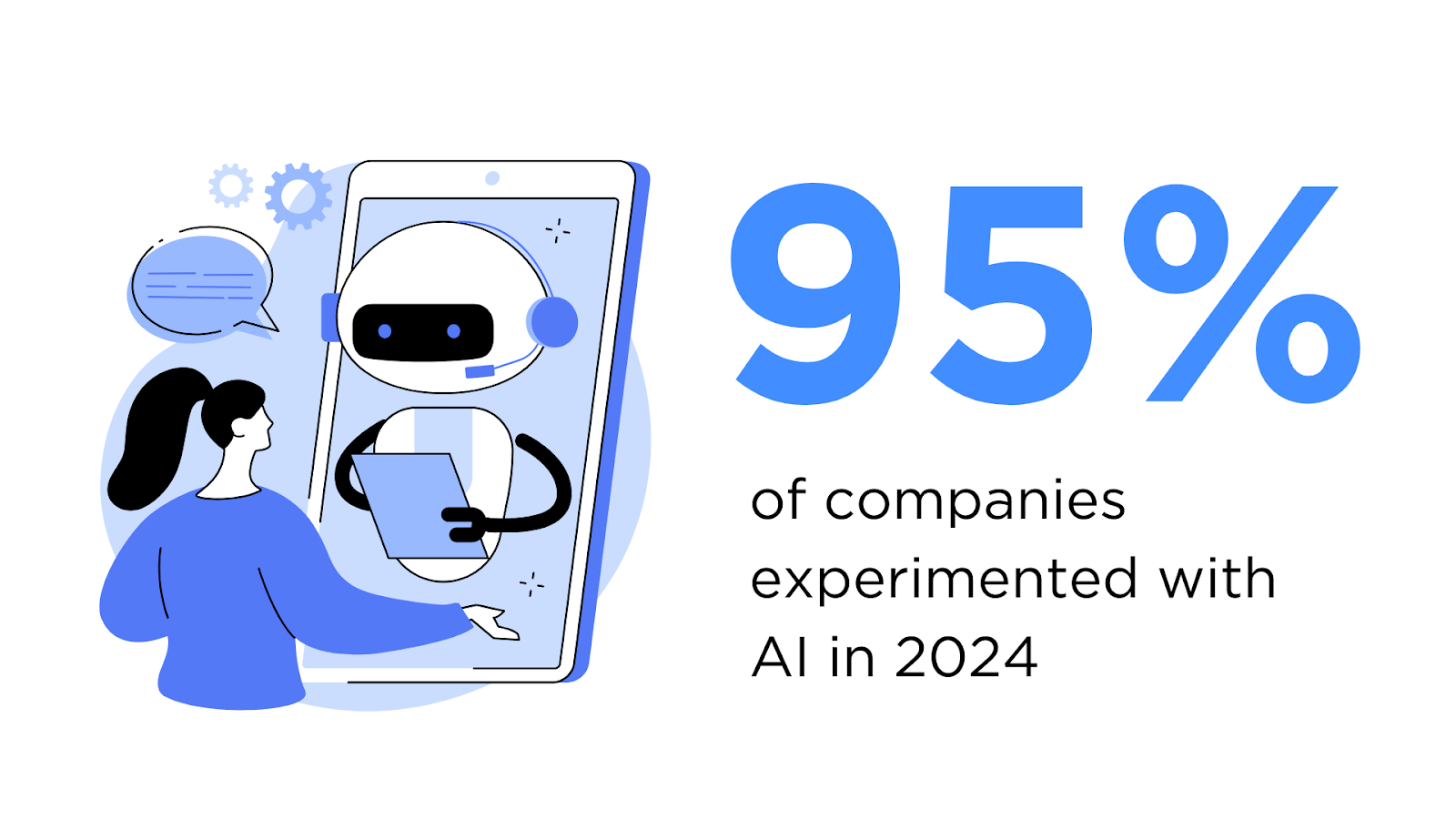
This year, L&D leaders will take a more discerning approach. Not just any AI product will do. L&D professionals will prioritize AI solutions that align with both business objectives and learner needs. AI-driven platforms capable of streamlining automation, delivering robust analytics, and providing insights to tackle strategic goals will take center stage.
On the learner side, hyper-personalization will dominate. AI-powered learning platforms or learning management systems (LMSs) that offer tailored recommendations and bespoke learning paths will play a crucial role in driving learner engagement.
Generative AI tools, such as LMSs or learning platforms with AI-driven content creation, will also gain traction for their ability to create microlearning or bite-sized e-learning content quickly and efficiently, enabling L&D teams to scale learning programs with minimal effort.
As artificial intelligence matures, L&D programs will integrate more and more the right AI tools—those that enhance both learning experiences and operational efficiency.
Learner Engagement Will Matter More Than Ever
In a recent newsletter, Josh Bersin noted that, “40% of workers are worried about job stability (with AI the #1 fear factor), and 77% expect their employer to help. I haven’t seen this level of “expectation” put on employers in a long time.” Employees are concerned about the future of work and are looking to their employers for guidance.
To address these challenges, fostering a culture of continuous learning will be paramount. Continuous learning has been shown to improve employee engagement, productivity, and retention. In fact, organizations with strong learning cultures are 92% more likely to innovate.
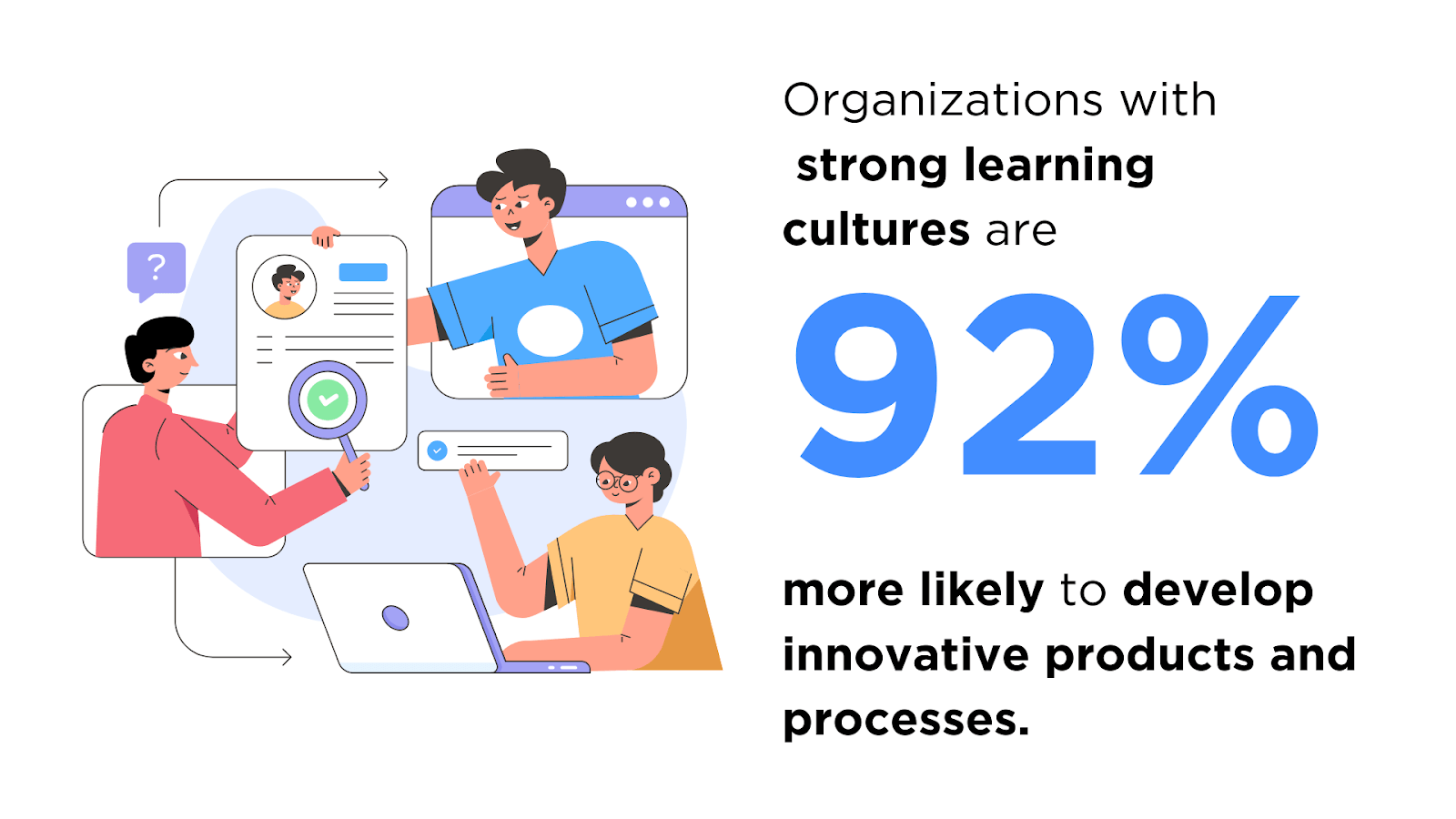
In 2025, employee training will shy away from a one-size-fits-all by incorporating hyperpersonalization through AI-driven personalized learning paths. Skill training through knowledge sharing and social learning will also be fostered to further improve the employee experience and create more engaging learning environments while preserving organizational know-how.
Immersive learning technologies, such as virtual reality (VR) and augmented reality (AR), will also become essential tools for engagement and upskilling. These advancements provide hands-on, simulations or experiential learning opportunities that not only captivate learners but also accelerate skills development.
Forget boring assessments, gamification, microlearning, and interactive training content will continue to drive engagement by making all learning from employee onboarding and workplace learning to customer education and partner enablement more accessible and enjoyable.
Analytics Will Be Front and Center
In 2024, L&D practitioners made significant strides in moving beyond being mere “ticket takers”—those who simply fulfill training requests—to becoming strategic business partners. In 2025, this trend will solidify as analytics take center stage.
At Inspire 2024, sessions on analytics and performance were among the most attended, underscoring the growing interest in data-driven decision-making. L&D leaders will increasingly use real-time analytics to demonstrate the impact of learning programs on business goals.
And this will benefit them: 70% of learning practitioners who are valued by their leaders are more likely to design and make recommendations based on evidence-informed principles compared to only 14% of learning practitioners that don’t.
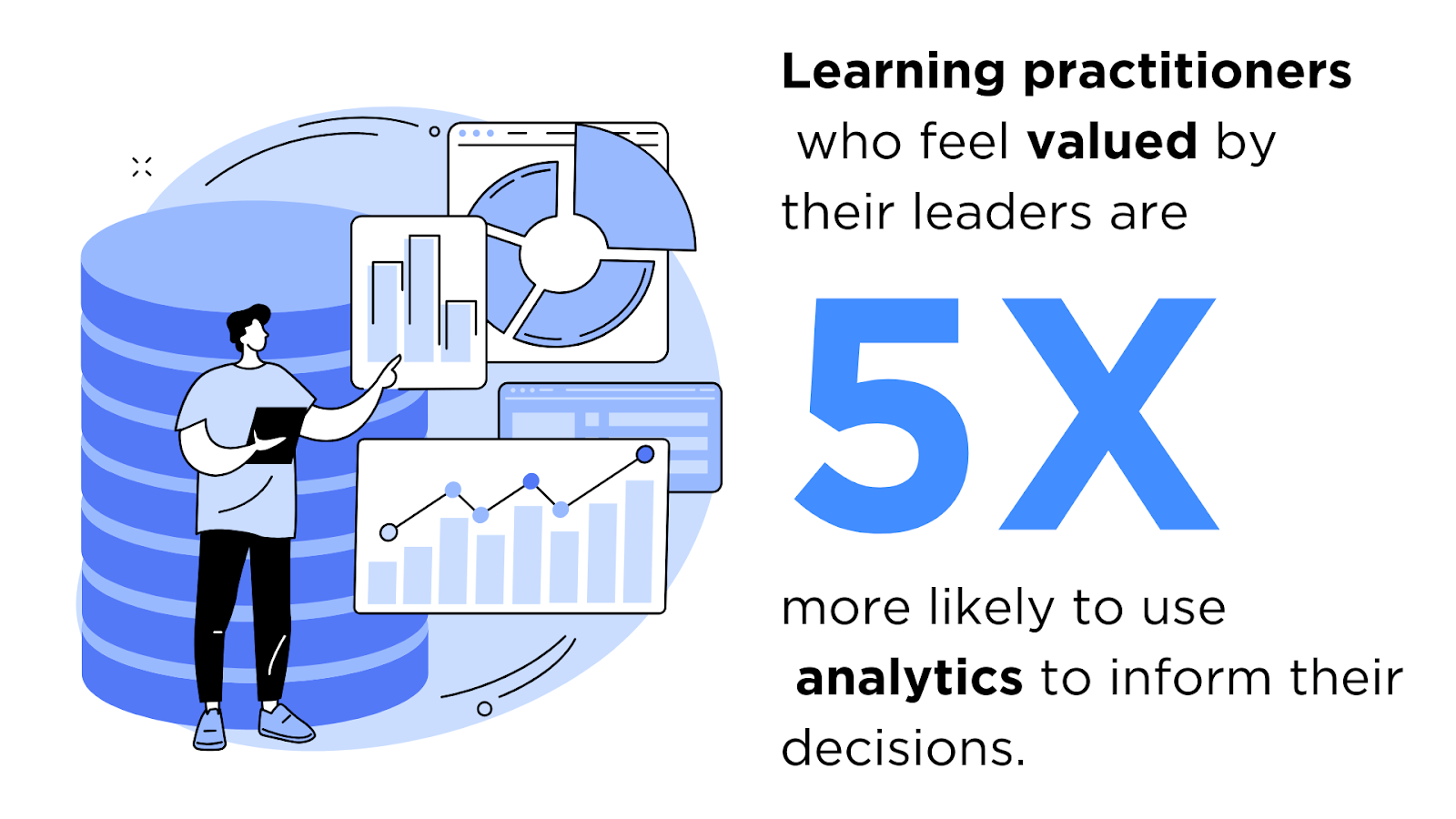
However, analytics isn’t just about data or metrics; it’s about context. L&D professionals will need to secure a seat at the table—at multiple tables, in fact. Engaging with stakeholders across sales, customer experience, and HR will be key to accessing the right data and understanding how learning initiatives contribute to broader organizational success.
Upskilling Will Be a Top Priority
The skills gap is a growing concern. The World Economic Forum predicts that 44% of workers‘ skill sets will be disrupted within the next five years. For this reason, upskilling and reskilling are not just buzzwords—they’re imperatives.
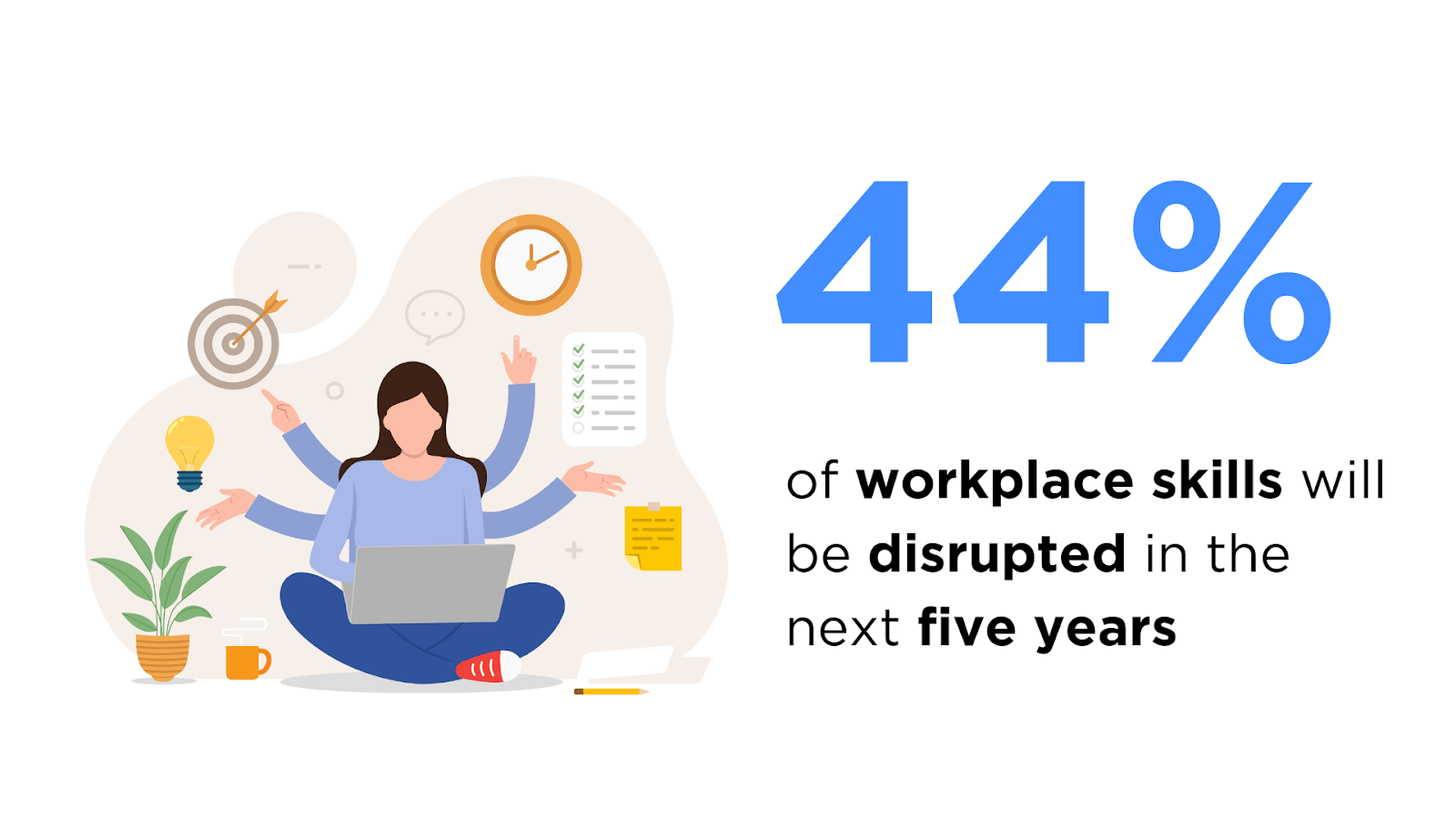
A recent report from Together highlighted that the top priorities for L&D and HR professionals in 2025 include leadership development, reskilling and upskilling, employee engagement and retention.
As new technologies evolve and disrupt traditional roles, organizations will need to focus on developing the employee skills that will keep their workforce competitive. This includes not only technical skills but also soft skills like adaptability, emotional intelligence, and collaboration. Personalized learning paths, supported by AI-powered tools, will foster employee development, enabling employees to acquire new skills at their own pace, in the flow of work and on-demand.
L&D teams will also need to collaborate closely with managers and leaders to identify skill gaps and design targeted training programs. Organizations that prioritize upskilling will be better equipped to navigate disruptions and seize new opportunities.
Learning in the flow of work will be more seamless
In 2025, learning in the flow of work will become increasingly effortless as AI automations and hyper-personalized workflows take center stage. By integrating learning directly into employees’ day-to-day tasks, organizations can provide immediate access to training resources without disrupting productivity. This approach enables employees to acquire skills as they encounter challenges, ensuring that learning becomes a natural part of their workflow.
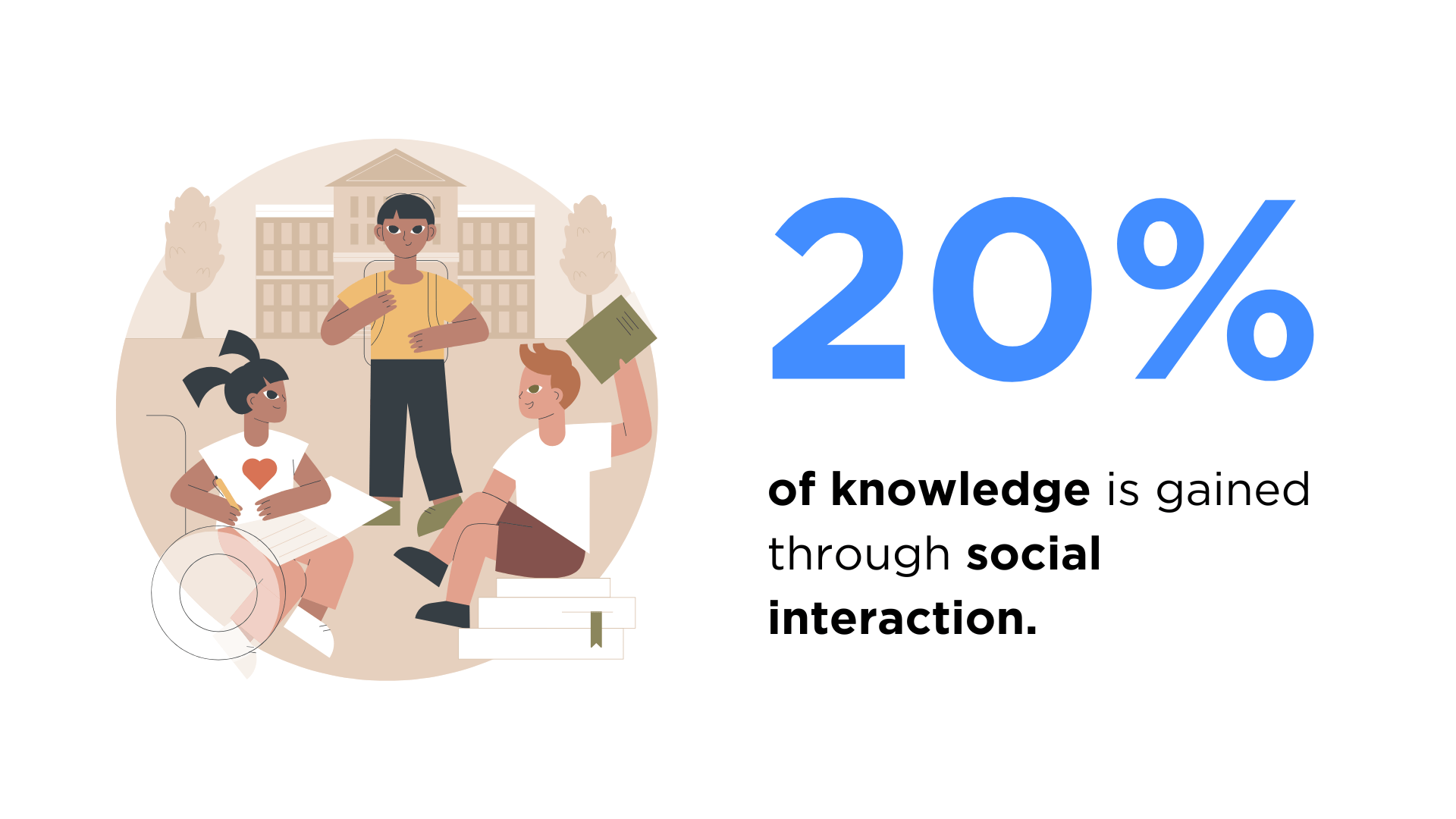
Social learning will play a vital role in this transformation. According to the 70-20-10 rule of learning, 20% of knowledge is gained through social interactions. Leveraging tools such as collaborative platforms, discussion forums, and team-based learning exercises, organizations can foster peer-to-peer knowledge sharing that enriches the overall learning experience. This not only enhances engagement but also accelerates the adoption of new skills.
Additionally, the availability of real-time analytics will allow organizations to track and refine these in-flow learning strategies. By understanding which methods resonate with employees, L&D teams can optimize their approaches and ensure learning aligns with business objectives.
Microlearning will continue to dominate
Microlearning, already a popular trend, will solidify its place as a cornerstone of L&D in 2025. With AI-driven authoring tools now widely accessible, creating and delivering microlearning modules will become faster and more efficient than ever. These bite-sized learning experiences are designed to fit seamlessly into busy schedules, making it easier for employees to engage with training content on demand.
The flexibility of microlearning also makes it ideal for addressing specific skill gaps or knowledge areas. Employees can access short, targeted lessons exactly when they need them, boosting retention and ensuring the immediate application of newly acquired skills. This format is especially effective for mobile learning, allowing employees to train anytime, anywhere, and at their own pace.
Furthermore, microlearning’s modular nature enables organizations to continuously update and customize content in response to evolving business needs or technological advancements. Combined with gamification elements like quizzes, points, and badges, microlearning will keep employees engaged and motivated to complete their training.
There will be a growing focus on training for soft skills
In the age of AI and automation, soft skills have emerged as a crucial differentiator in the workplace. As machines take over routine tasks, human-centric skills such as leadership, communication, and emotional intelligence will be more important than ever. In 2025, organizations will double down on soft skills training to prepare their workforce for the future of work.
Leadership development, in particular, will be a key area of focus. As teams become more diverse and remote work continues to expand, leaders will need to master skills like adaptability, cultural sensitivity, and team building. Training programs will incorporate simulations, role-playing exercises, and coaching sessions to enhance these competencies.
Soft skills training will also extend to areas like problem-solving, creativity, and conflict resolution, equipping employees to navigate complex, dynamic work environments. By integrating immersive technologies such as virtual reality (VR) and augmented reality (AR), organizations can create realistic scenarios that allow employees to practice and refine their skills in a safe, controlled environment.
In a world increasingly dominated by AI, the ability to connect, empathize, and lead will set top performers apart. Organizations that prioritize soft skills training will be better positioned to foster innovation, collaboration, and long-term success.
Companies will tackle the knowledge management problem
In the first episode of Leaders in Learning, Josh Bersin talks about the knowledge management problem. “I don’t think there’s any choice for CEOs, CHROs, and CFOs to invest more and more in [knowledge management].”
He adds, “one of the clients we’re working with right now is a large defense contractor in the UK. They’re a 55,000-person company. They make jet engines and missile systems and all the information about how to do that is in the heads of baby boomers who are leaving, and the young engineers can’t learn it fast enough!”
In 2025, we’ll see companies prioritize knowledge management systems (KMS) or tools like LMSs with KMS capabilities to drive collaboration, innovation, and efficiency. These solutions will play a key role in preserving institutional knowledge, streamlining workflows, and supporting employees in navigating complex work environments.
KMS or learning platforms with KMS capabilities will enable organizations to centralize their information and make it easily accessible to employees. This will help businesses reduce redundancy, ensure consistency, and improve decision-making processes. With the integration of AI and automation, knowledge management solutions will also offer smarter search capabilities and personalized recommendations, allowing employees to find relevant information faster.
Moreover, knowledge management solutions like learning platforms will enhance organizational learning by promoting knowledge sharing and retention. They will foster collaboration through tools like discussion boards, wikis, and file-sharing platforms, enabling teams to build on each other’s expertise. In the face of growing employee turnover and remote work trends, knowledge management will ensure critical institutional knowledge does not go by the wayside, remains within the organization, and is continuously updated for future use.
By investing in robust knowledge management solutions, companies in 2025 will not only address immediate operational challenges but also set themselves up for long-term success in an increasingly knowledge-driven economy.
Diversity, Equity, and Inclusion (DEI) Training will become more pressing
According to a recent newsletter by Josh Bersin, “A major study in Bloomberg just showed that the top 84 companies in the US reduced white collar headcount by 127,418 people last year. (And more than a quarter of these were black, so the new “anti-DEI” movement is directly impacting black workers.)”
That’s right: 2024 saw a lag in DEI training programs that will need to be addressed in 2025. The newer generations are becoming more and more diverse, which means that the workforce of the future must represent that. In 2025, organizations will see a further shift in DEI training to foster inclusive workplace cultures and address the growing demand for equity in the workplace.
As the global workforce becomes more diverse, employees expect their organizations to not only acknowledge but actively promote inclusivity. DEI initiatives will need to extend beyond traditional compliance training to focus on embedding inclusive practices into everyday workflows.
To foster a more inclusive environment, L&D professionals can leverage immersive learning technologies such as virtual reality (VR) simulations to create realistic scenarios, helping employees build empathy and develop skills like cultural competence and unconscious bias awareness.
AI-powered platforms will also play a role in personalizing DEI training to cater to the unique needs of different employee groups. By prioritizing DEI, companies will improve employee engagement, retention, and overall organizational success.
L&D teams will look to foster employee well-being
In 2024, we saw plenty of surveys and studies showcase a growing negative sentiment in worker generations like Millennials and GenZers. For this reason, employee well-being will become a key focus in L&D strategies for 2025 as organizations recognize the link between well-being and productivity. The rise of hybrid work environments and the increasing pace of technological change have led to higher levels of stress and burnout.
L&D teams will integrate well-being initiatives into their learning programs to address these challenges. For example, training programs will include modules on stress management, mindfulness, and work-life balance, helping employees develop resilience and emotional intelligence.
Gamification and bite-sized learning modules will also be utilized to reduce cognitive overload and make learning more engaging. Additionally, AI-driven platforms will provide personalized recommendations for well-being resources based on individual employee needs. By fostering a holistic approach to employee development, organizations can create healthier, happier, and more productive workplaces.
Shaping the Future of L&D in 2025
The L&D landscape in 2025 will be defined by strategic choices and innovative solutions. From leveraging AI to fostering engagement and addressing the skills gap, the key to success lies in staying agile and focused on outcomes.
Organizations that embrace these L&D trends will not only navigate the challenges of a rapidly changing work environment but also position themselves as leaders in their industries. By investing in the right technologies, cultivating impactful learning experiences, and using analytics to demonstrate impact, L&D professionals can drive meaningful change and contribute to organizational success.
The road ahead is full of opportunities for those ready to innovate and adapt. This all starts with the right tools. Take a tour of the Docebo platform and request a demo for a great start to the year.
Let’s make 2025 a year of growth, learning, and achievement.
Frequently asked questions
What L&D areas are most important in 2025?
The most critical L&D areas in 2025 include:
- Upskilling and Reskilling: With rapid technological advancements and evolving job roles, organizations will focus on equipping employees with both new technical skills and essential soft skills like adaptability, collaboration, and emotional intelligence.
- Personalized Learning: Leveraging AI to deliver tailored learning paths and experiences that align with individual needs and organizational goals.
- Analytics and Data-Driven Insights: Using real-time analytics to measure the effectiveness of learning programs and link them to business outcomes like employee retention, performance, and organizational success.
What can I do in 2025 to set me up for success in the future?
To set yourself up for success in 2025 and beyond, consider these steps:
- Stay Agile and Adaptable: Embrace continuous learning and be open to acquiring new skills and competencies as roles and technologies evolve.
- Leverage AI Tools: Use AI-powered tools for automating workflows, generating learning content, and creating personalized training experiences.
- Focus on Data and Metrics: Develop a strong understanding of analytics to measure learning impact and demonstrate ROI to stakeholders.
- Engage with Cross-Functional Teams: Secure a seat at different business tables (e.g., sales, customer success, HR) to align learning initiatives with broader organizational goals.
- Explore Immersive Technologies: Familiarize yourself with VR, AR, and gamification to incorporate innovative and engaging learning methods into your programs.
How are companies integrating AI into their L&D strategy?
Companies are increasingly embedding AI into their L&D strategies to enhance both efficiency and effectiveness. Here’s how:
- AI-Driven Personalization: AI is used to create tailored learning paths and recommendations for individual learners based on their roles, performance, and preferences.
- Automated Content Creation: Generative AI tools help create bite-sized learning modules, quizzes, and other training content quickly and efficiently.
- Advanced Analytics: AI-powered analytics provide real-time insights into learner engagement, skill gaps, and program effectiveness, helping organizations optimize their L&D efforts.
- Immersive and Experiential Learning: AI supports VR and AR applications, offering learners realistic and hands-on training simulations.
- AI Chatbots and Support: Intelligent chatbots provide on-demand assistance, answer learner queries, and guide users through their learning journey.
- Automation of Administrative Tasks: AI streamlines repetitive tasks such as scheduling, reporting, and tracking certifications, freeing up L&D professionals to focus on strategic initiatives.
